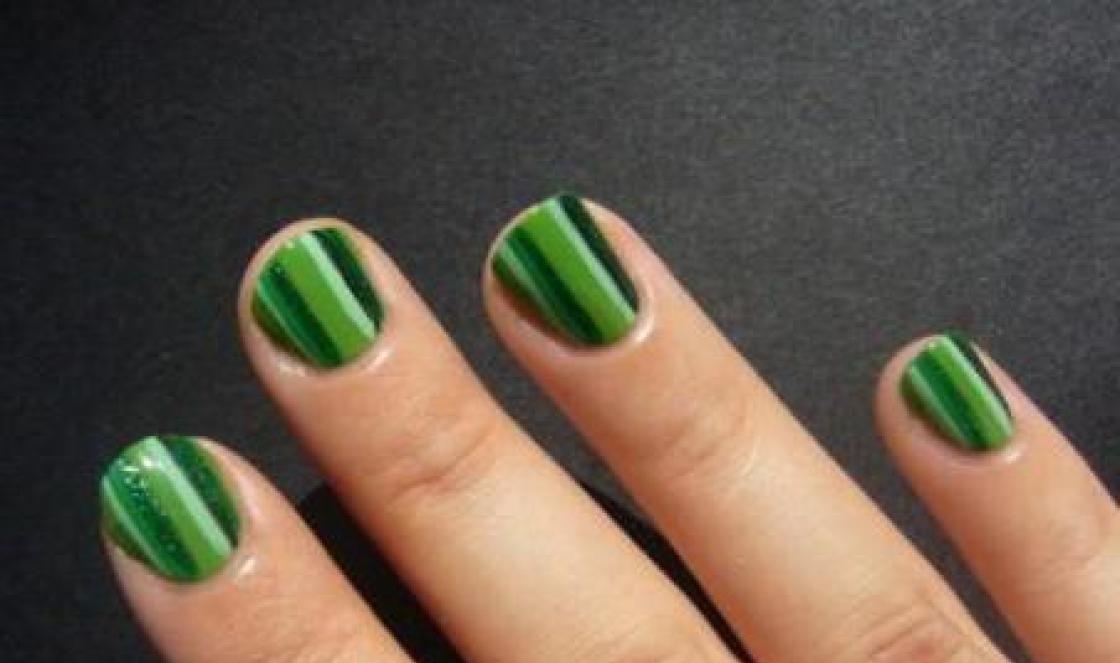While pirates have a reputation for being bloodthirsty criminals, they are also known for being flamboyant fashionistas. This is exactly the image one can imagine from popular culture. Traditionally, these are middle-aged people wearing bandanas and wide-brimmed hats. And there is one essential accessory that Jack Sparrow and Captain Morgan sported: a gold earring.
Exactly when sailors started putting rings in their ears is anyone's guess, but there are several legends to explain this fashion. The most popular version is that sailors wore gold and silver earrings so that they would be buried with dignity no matter where they died. Gold and silver were the accepted form of payment almost everywhere in the world. Keeping a little precious metal in your ear, where it wouldn't wash out to sea, was a pretty solid insurance policy.

There is some truth in this myth, historians say. However, the filibusters had little chance of dying a natural death. This means that pirates wore earrings to show off their wealth. And not just earrings. During the Golden Age of Piracy, corsairs often drilled holes into coins and wore them as necklaces or bracelets. Such jewelry on the wrist or neck was more preserved than a wallet. Archaeologists have found a lot of jewelry made from money - so this is not just a myth.

In addition to the down payment for burial, earrings and jewelry were targets of rebellion. In the 17th and 18th centuries, much of Europe, and especially England, had a number of laws that regulated what ordinary people could wear and dress. In this way the ruling class separated itself from the commoners.

These laws stipulated the list of permitted things and their color. Men were prohibited from wearing any jewelry. Violations were punishable by imprisonment and monetary fines. It is not surprising that these restrictions were ignored and ridiculed by people on the other side of the law. The bright dresses and earrings associated with pirates were a direct challenge.

However, there is no specific historical evidence of what the pirates actually wore, nor are the specifics of their fashion known. And so there is no certainty that their earrings meant anything.

It is believed that corsairs did not actually wear earrings and bandanas. And they were the invention of the 19th century American artist Howard Pyle. When he was asked to portray pirates for children's books, he used Spanish bandits and peasants as his model. So, Pyle's filibusters wore sashes around the waist, scarves... and earrings. Pyle is often credited with popularizing the stereotypical pirate costume. And the image of pirates wearing earrings most likely caught on thanks to his artwork.
Whether it is a myth based on some truth, or truth surrounded by myth, swashbuckling seafarers and their earrings are now inextricably linked. Even hundreds of years later, it is not possible to separate the pirates from their treasures as well.
Any person who is interested in the sea and maritime topics has probably heard about Francis Drake, an English navigator and pirate... The strait is named after him and connects the southern parts of the Atlantic and Pacific oceans. In the north, the strait is limited by the Tierra del Fuego archipelago, and in the south by the South Shetland Islands (Antarctica). It is the widest named strait on Earth - about 820 kilometers at its narrowest part.
The powerful “Western Wind Current” - the Antarctic Circumpolar Current - passes through the strait. Strong storms are frequent in the strait, and the storms of the Drake Passage are among the strongest on the planet - winds of more than 35 m/s and waves above 15 meters are not uncommon here. Icebergs are found in the Drake Passage, mainly in its southern part.
The strait contains the southernmost point of the South American continent and the American continent - the Diego Ramirez Islands, as well as the legendary Cape Horn. Why is the strait named after Francis Drake? So he discovered it and passed through this strait in 1578 on his ship “Golden Hind”.
And this was more than 400 years ago.
The maritime tradition of allowing those who passed the Drake Passage to wear a gold earring dates back to the 17th century. By order of Queen Victoria, who had heard about severe storms in the Cape Horn area, often caused by the collision of several cyclones at once, English sailors passing through the strait were allowed to drink a glass of whiskey in the taverns of English ports at Her Majesty's expense. The gold earring became confirmation of this right.
It all started as a tradition in the English Navy. But gradually it became a reward. In modern terms, an earring for sailors is an international award from the British Admiralty for passage on a sailing ship through the Drake Passage.
There are many beautiful legends about a gold earring in the ear. The right to wear it is attributed to sailors passing through the Drake Passage, rounding the Cape of Good Hope, crossing the equator, circumnavigating the world, and others. All this exists at the level of legends, but such fashion really existed among the sailors of the sailing fleet, and the gold earring rather emphasized the luck and wealth of the sailor, and served more as an amulet. Not everyone could afford a gold earring; sailors more often wore silver or copper earrings.
It has always been considered especially honorable to cross the equator at the starting point of latitude and longitude - at zero degree, that is, at the point that sailors call the “center of the Earth” or the “golden point”. In the era of the sailing fleet, sailors who crossed the equator in this place received the right to wear a gold earring in their left ear and sit in the port taverns with their feet on the table. If the sailor also happened to round Cape Horn more than once, then the “Council of Old Sea Wolves” awarded him a special diploma and an earring on which Cape Horn and the constellation of the Southern Cross were depicted. Such a sailor had the right... to paint the nail on the little finger of his left hand, which aroused envy among sailors who did not have these “privileges.”
The sailor's profession was dangerous; they often died in the ocean, and their dead bodies sometimes washed ashore. The one who found the corpse buried it and took the earring. Like paying for a funeral.
There is a sign - if a man has an earring in his ear, he will not drown. Among the pirates, this meant a captured ship and served as a kind of table of ranks; if you participated in the boarding team more than ten times, then the earring was of medium size, and if you were in command, then the largest one, it goes without saying that only the captain, second after, wore it. God on a sailboat!!!
As the ancient Greeks said, there are living people, there are dead people, and there are those who go to sea...
Reviews
There was a tradition among the Cossacks to wear an earring if the serviceman was the only son in the family. As a support for his elderly parents, they tried not to send him into dangerous situations. But how can you restrain a Cossack? Youth is characterized by carelessness.
Unfortunately, now the presence of an earring in a man’s ear is just a fashionable attribute, the real meaning has been lost. As in the joke: “They say, son, pirates, Cossacks and homoxiao wear earrings in their ears. For some reason, I don’t see a ship or a horse in our yard.”
I like your stories, they are informative and not boring, not drawn out and, of course, in the final lines there is a conclusion, a kind of generalization of all of the above.
I recently installed an application on my smartphone that publishes interesting notes. It's funny what latest news in the feed it turned out to be just on a pirate theme. I happily started reading, but, unfortunately, I was a little disappointed with the information content and level of reliability of the material. And here's why: " Traditionally, sailors were allowed to wear the earring after first crossing the equator or after rounding Cape Horn. Many of them believed that the earring was a talisman that protected seasickness or preventing drowning. However, many pirates also wore this jewelry for practical use - in the event of their death, the earring became payment for transportation to their relatives so that they could be buried properly. And the pirates, who were responsible for firing the cannons, found an even more banal use for them - the earrings served as ear plugs for them during a loud salvo.”
This is not the first source in which I have come across similar statements about pirate earrings. I am not a historian, and I have not written any dissertations on the topic of everyday life of piracy, but having a small background of knowledge on the topic of the history of maritime robbery and the life of pirates, I dare to express my opinion regarding the issue raised: “Why did pirates wear earrings?”.
As for the first sentence, there are no claims regarding this data, since the pirates really wore the earring after crossing the equator or rounding Cape Horn. The earring was an attribute that symbolized the sea experience of the robber, since the same Cape Horn represented very dangerous waters due to frequent storms.
As for a “dignified funeral.” Here, don’t even go to Wikipedia, everything is very clear, good old logic will help us. The cemetery for a pirate killed in battle has always been the seabed. The robbers stayed in the raid for weeks or even months. Based on this, we highlight three points:
- Can you imagine what the smell would be on the ship if all those killed were given a decent Christian funeral, transporting them to their relatives? This time.
- Was every member of the team familiar with the family tree of each of his brothers in the craft? Where should I send the body? That's two.
- As for the transportation itself, I don’t think that anyone, having received a gold earring as payment, will undertake to deliver the body of a murdered, and already slightly smelling, pirate to an unknown location. That's three.
Through simple reasoning, we come to the conclusion that the earring in the pirate’s ear is clearly Not was used for the purpose described above, namely, to deliver the body to relatives for the purpose of its further burial.
The earring is like an earplug!?
Earrings as earplugs (ear plugs). Has the author of the note presented above ever seen earrings? Usually they are either oval in shape, which does not allow them to fit into the ear, or sharp - if you try to insert such an earring directly into your ear canal, you can easily damage your eardrums. I think it’s better to endure the unpleasant loud sound of a cannon salvo than to have damaged ears and an object stuck in them.
Yes, artistic image the pirate has many inconsistencies with its historical prototype, but these inconsistencies should not be shoved into history and at the same time ascribe an absurd purpose to them. Pirates wore earrings, but not many, and not for the two reasons we just discussed.
by Mikhail Ikhonsky | Jun 23, 2018
It would seem that there is no such person who would not know about pirates and could not describe them appearance and talk about your lifestyle.
After all, so many books have been written, so many films have been made about daring young men who boldly board ships of various sea powers. And then, having divided the spoils, they reliably hid their share on uninhabited islands. But... how true are the generally accepted ideas about pirates and what were these sea robbers really like?
We offer 10 of the most interesting but little-known facts about those whom different times and in different countries called gentlemen of fortune, corsairs, filibusters, etc.

From time immemorial
Pirate roots go deep into ancient times. Then they made a living by plundering villages located on the coasts; They caught lonely travelers, kidnapped them and sold them into slavery.
Such robbers were then called “Leisters”, and the term “pirate” appeared later in the 4th-3rd centuries BC.
The “golden age” of piracy is considered to be the period from the 16th to the 18th centuries, when maritime trade flourished, and it was still impossible to provide adequate protection for merchant ships.
It is noteworthy that for many centuries the line between a merchant seafarer and a pirate was very thin, since where it was not possible to make money from trade, sailors resorted to robbery and violence.
Drunkenness ban
Contrary to the prevailing stereotype, pirates were not complete drunkards. And if on the shore they could still afford to “relax,” then on most ships there was a strict prohibition law.
And how could it be otherwise?! How could drunk people steer a ship and navigate the vast open waters correctly?
As for the fame of inveterate drunkards, the pirates owe it to R. L. Stevenson and his “Treasure Island.”

Eye patch
Often pirates are depicted with an eyepatch over one eye. According to legend, they used this bandage to cover an empty eye socket or simply an eye damaged in battle.
However, as it turns out, everything is much more pragmatic. According to one version, pirates used an eye patch when firing from cannons - so that when there was a flash and possible injury save at least one healthy eye.
According to another version, the bandage was needed so that when descending into the darkened hold, the pirate could quickly adapt to poor lighting conditions.
Pirate flag
Among the most popular attributes of sea robbers is a black flag with a skull and crossbones, called the Jolly Roger.
However, in fact, such a flag initially had nothing to do with pirates - it was used to warn oncoming ships about the epidemic on the ship.
As for the pirate flag, initially gentlemen of fortune could raise any flag on their ship - depending on the situation, on the ships of which country they were going to attack.
Later, at the end of the 17th century, a law was passed in England according to which all private (pirate) ships were required to have a red flag. The new flag was almost immediately dubbed "Red Jack".
Following the “official” pirates, the so-called free robbers - those who were not subordinate to any state - began to hang colored flags on their ships. Moreover, flags and pennants could be not only red, but also yellow, green, blue, and black.
Each color had its own meaning; black, for example, conveyed the order to surrender weapons.
As for the name of the flag, the Jolly Roger appeared as a result of the peculiarities of the translation of “Red Jack” from one European language to another.
Legalized piracy
Strange as it may sound, there was a period when piracy existed quite legally. Many maritime powers not only legalized the status of sea robbers, but also received a share of their criminal proceeds.
Such legal pirates were, for example, privateers who had the legal right to seize and destroy ships of enemy states, as well as neutral countries.
Subsequently, such legal pirates were called corsairs and privateers. The latter term was most often used in relation to robbers - subjects of the Queen of England.
Division of spoils
The pirates had their own system for distributing stolen goods. It was strictly observed by all team members.
According to the rules developed, initially a certain fund was allocated from the total production, from which money was subsequently used to purchase provisions, medicines, repair work, etc.
A tenth of the remaining goods was due to the captain of the ship. The rest was divided among all team members. The smallest share went to the ship's carpenter, since he did not participate in battles and robberies.
It is noteworthy that pirates wounded in battle received mandatory compensation (these amounts were paid from the general fund).
The spoils were distributed by a quartermaster chosen from among the crew.

Pirate - discoverer
There were many famous figures among the pirates. Some became famous for their cruelty, others for their luck. But perhaps the most famous corsair in history was Francis Drake, the first Englishman to sail around the world and make many interesting discoveries.
Drake began his career as a slave trader. And after the Spaniards attacked his ship and almost killed him, the English privateer was overcome by hatred and a thirst for revenge.
A talented commander and navigator, he single-handedly attacked Spanish ships for a long time. Having robbed the ship, Drake let it sink. His ferocity and cruelty during this period earned him his nickname, the Dragon.
Having appreciated the merits of her subject, the English queen knighted the pirate and entrusted him with a responsible task, sending him to the American shores on a special mission.
Strict discipline
Another stereotype associated with pirates is their disorganization and lack of discipline.
In fact, on any pirate ship there was nothing wrong with discipline - it was even stricter than in the army. After all, without complete obedience and submission, the months-long voyage could end in tears.
For violating order on the ship, the offender was severely punished - he could be beaten, tied to a mast, or... left on a desert island.
Earrings and talking parrots
One more " business card"a real pirate - an earring in his ear.
In fact, there was an earring, but not everyone had it - it was allowed to be worn by those who crossed the equator or crossed the path through Cape Horn. There was an opinion among pirates that this decoration could protect its owner from seasickness and drowning.
In addition to being a sign of status and a talisman, a pirate earring also served more practical purposes. So, in the event of the death of a pirate, the earring could be used to pay for the fact that his body would be taken home and buried with dignity.
In addition, some pirates wore earplugs on their earrings, which were used when firing cannons to protect their hearing.
As for parrots, it is unlikely that the pirates had the time and desire to feed an additional mouth, and even deal with the bird - teach it to talk.
Pirate treasures
Probably everyone has dreamed of finding a pirate treasure at least once in their life. But even if such an opportunity had arisen, most likely it would have led nowhere. Contrary to what most people believe, pirate booty was not very significant. And the sea robbers squandered the proceeds with a clear conscience as soon as they got ashore after the voyage.
And even when there was something left from the loot, the pirates had no point in burying the treasures - their lives were too short to waste it on such nonsense.





